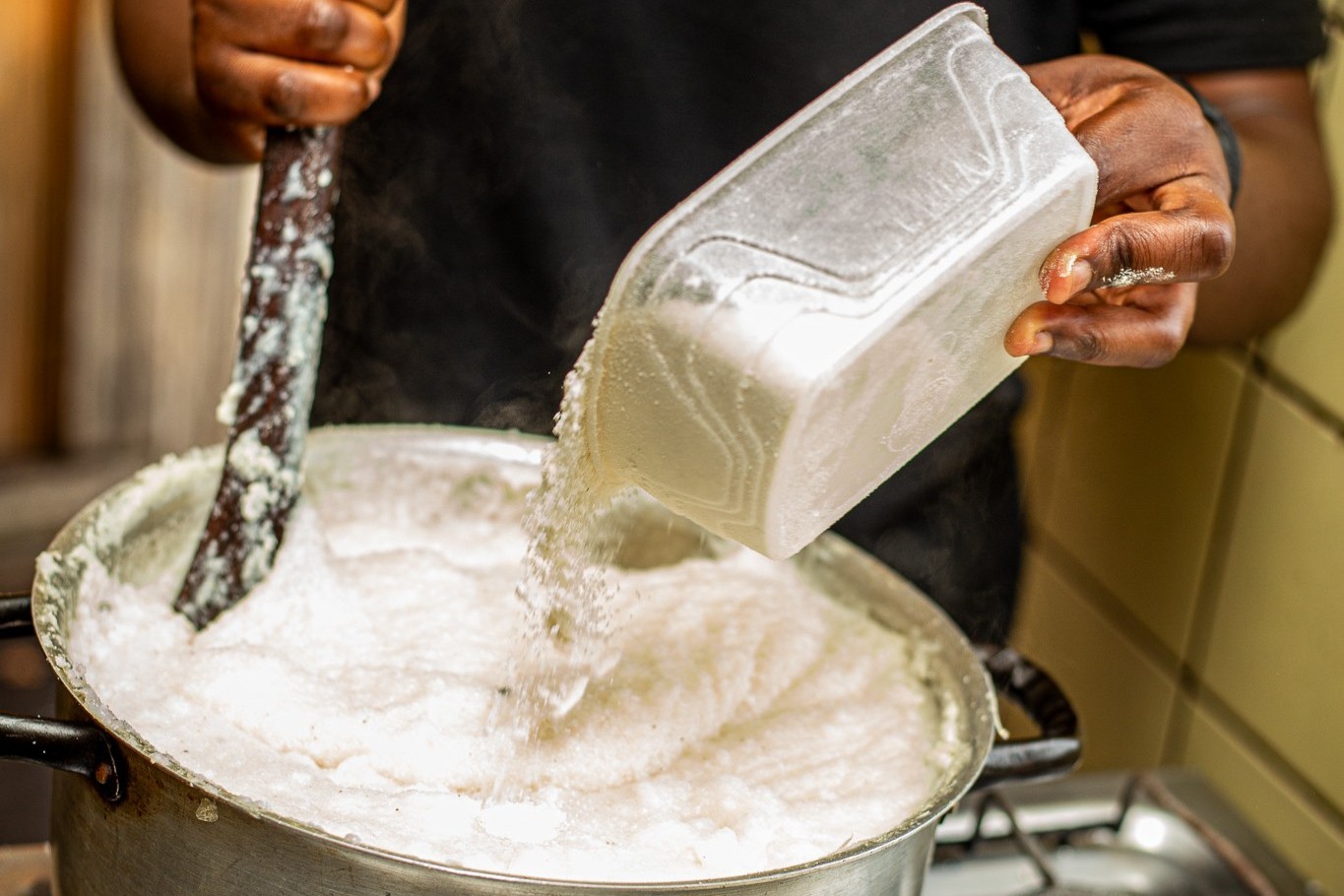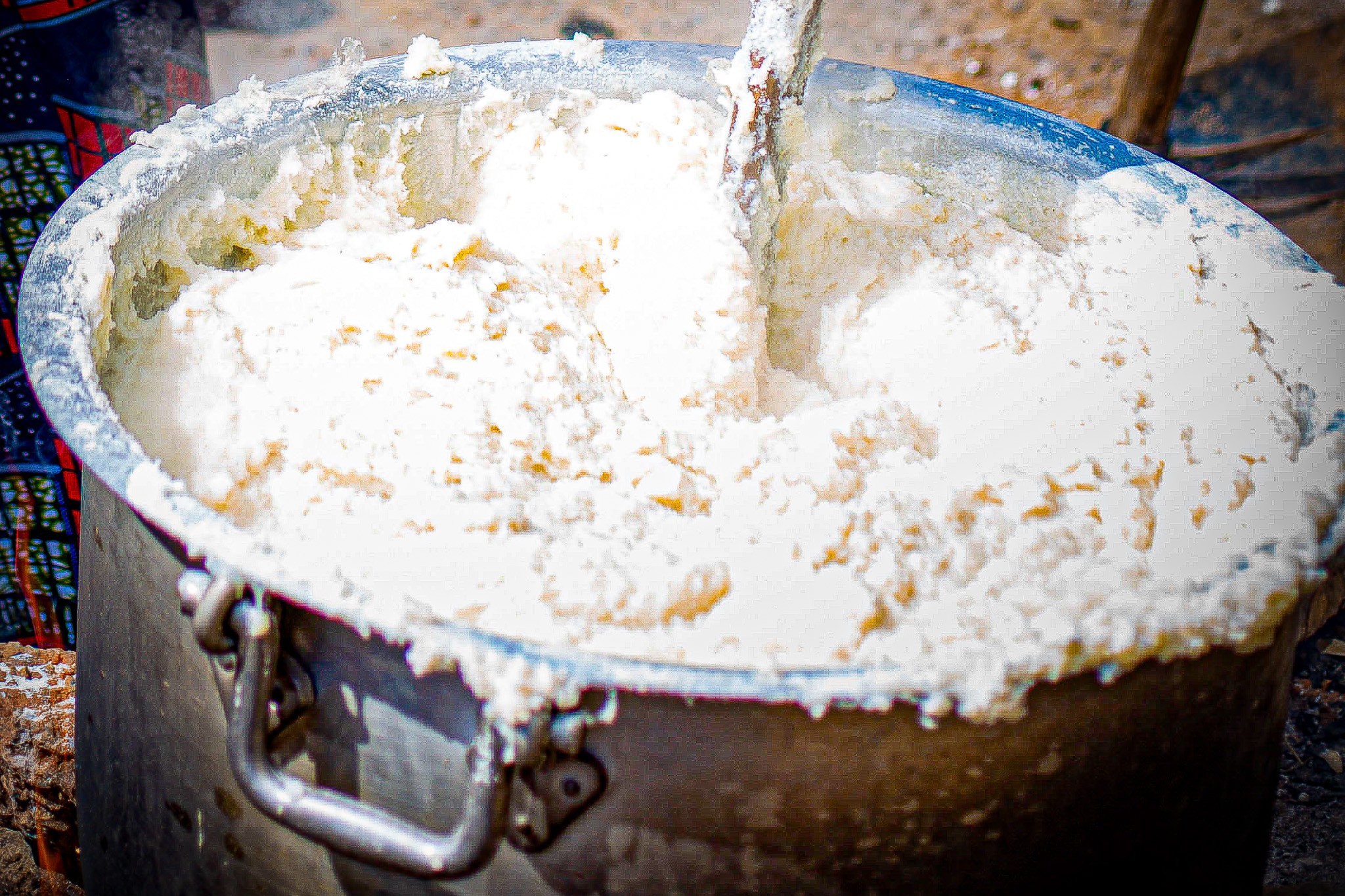Maize is Zambia's principal crop and it is mainly used to produce mealie-meal which is used to cook a thick hardened porridge meal called Nshima in Zambia, Nsima in Malawi, Sadza in Zimbabwe, Ugali in Kenya and Pap in South Africa.
Mealie-Meal which is the main ingredient in cooking Nshima is made by pounding or grinding the dry maize or corn. Nshima is a traditional staple food in Zambia and is also commonly consumed in many other parts of Southern and Eastern Africa. Nshima is traditionally served in different forms but mainly consumed with an accompaniment or relish such as beef stew or chicken. It can also be eaten with sour milk or beans and vegetables to add taste to it. Although eating utensils such as folks can be used, many people in Zambia use bare hands to eat it. I hope you now have a clear background to Nshima and now I will take you through a step by step guide on how it is prepared in Zambia.
Ingredients and Tools You'll Need
To start with, to prepare Nshima you need to have the following tools and ingredients:
- Six (6) cups of maize meal (depending on the size of Nshima you want. You could have less cups if you want a small portion)
- Five (5) cups of water
- Cooking pot
- Wooden spoon
- Stove or charcoal brazier or cooking fire using wood

Traditional serving of Nshima with vegetable relish and beef stew, a staple in Zambian cuisine.
Step-by-Step Preparation
Once you have the needed ingredients and tools, you now begin the preparation process of the Nshima. The following steps are to be followed:
- Get the cooking pot and pour the five (5) cups of water.
- Carefully place the pot on the stove or brazier or cooking fire and let the water boil for 5-10 minutes.
- Once the water has reached a rolling boil, add two cups of maize meal and stir the mixture constantly with a cooking stick to prevent lumps from forming until it starts to get thick and then allow about 10 minutes for it to simmer.
- After 7-10 minutes of simmering, you starting adding the mealie-meal whilst blending and mixing the ingredients in the pot until it thickens and forms a smooth dough. This process can take about 5 minutes, depending on the heat and type of maize meal used. For instance, breakfast takes about 5 minutes while Roller Meal takes longer than that.
- After mixing for some time cover the pot with a lid to prevent the Nshima from drying out and let it simmer for 3-5 minutes.
- Your Nshima is now ready and you can serve it hot, accompanied by stews and any other relishes that you like.
Nshima can be served with a variety of dishes including vegetables and meat. My favourite is Nshima with Katapa (cassava leaves) and beef stew.
"Preparing Nshima is a simple yet rewarding process that requires patience. With these easy to follow steps, you can make good Nshima that your family and friends will enjoy." — Sebastian C.
Cultural Significance
In Zambian culture, Nshima is more than just food—it's a central part of daily life and social gatherings. The preparation and consumption of Nshima often brings families together, with the meal being shared from a communal dish in many traditional settings.
The ability to prepare good Nshima is highly valued, especially in rural communities where it remains the primary source of sustenance. The texture should be just right—firm enough to be shaped with the fingers but not too sticky or too dry.

Traditional cooking methods often involve preparing Nshima over an open fire, adding to its authentic flavor.
Nutritional Value
Nshima is primarily a carbohydrate source, providing the energy needed for daily activities. When paired with protein-rich relishes like fish, beef, or beans, and vegetable sides, it forms a complete and nutritious meal.
In recent years, there has been a growing trend of using alternative grains like millet or sorghum to prepare Nshima, offering different nutritional profiles and flavors for those looking to diversify their diet.
Now go ahead and give it a try and enjoy the rich nutrients and taste of our traditional Zambian staple food. Whether you're a Zambian living abroad missing the taste of home, or someone curious about international cuisines, mastering the art of preparing Nshima will give you a genuine taste of Zambian culture and tradition.
